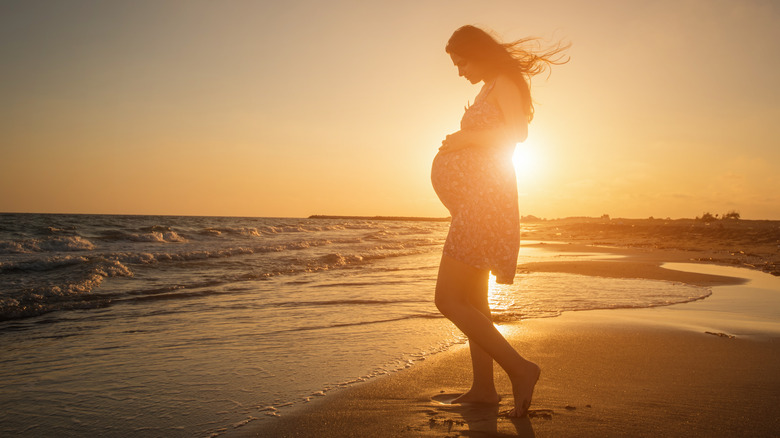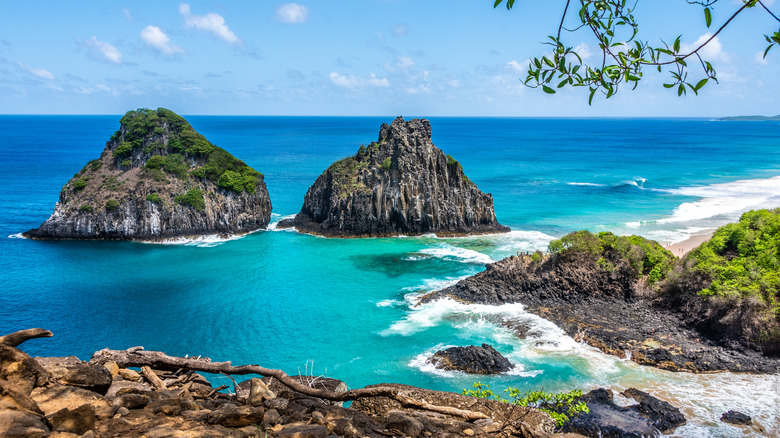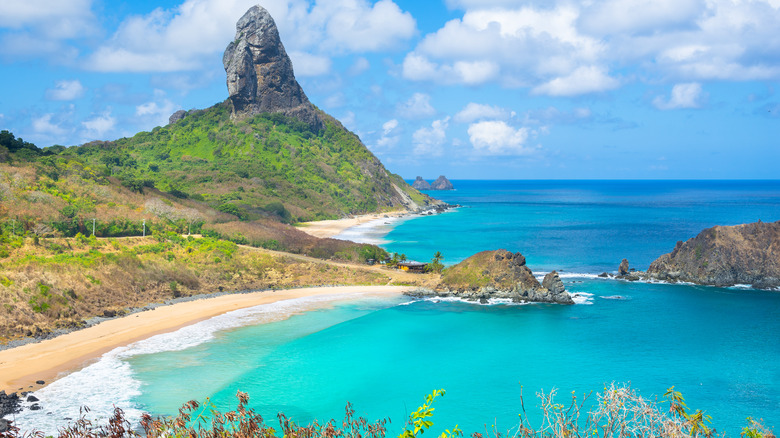The Truth Behind The Brazilian Island Where Giving Birth Is Forbidden
In Brazil, the Fernando de Noronha archipelago's beaches are often ranked as the most beautiful on Earth, according to Insider. The region is undoubtedly one of the most paradisic places in South America — perhaps even in the world — but its importance goes beyond beauty. Approximately 75% of its 21 islands have been declared protected national marine parks and sanctuaries during the 1980s, and only 500 people can enter the island per day (via The Culture Trip).
It is easy to be captivated by Fernando de Noronha's turquoise waters, unique landscape, and marine life. According to Unesco, the archipelago has the only atoll in the South Atlantic, and Dolphin Bay has the largest population of dolphins in the world. Noronha is also home to tuna, billfish, cetaceans, sharks, and marine turtles, which offers a unique experience for divers. However, the region also struggles with conservation, and the increasing number of people on the island has a significant impact on the environment (via Island Conservation). Interestingly, Fernando de Noronha has been part of the Brazilian story since the 18th century, when the South American country was still a Portuguese colony.
Fernando de Noronha used to be a prison
In 1737, Portugal had decided to improve its defense by building ten forts along the main island in Fernando de Noronha, and it ultimately became a prison in 1800. When Brazil declared its independence, Noronha was so isolated that it took two years until the news reached the island (via BBC).
During the 20th century, between 1935 and 1942, political prisoners were sent to the island. According to Time, it was more difficult to escape the prison there than on the Devil's Island. Needless to say, prisoners in the region probably would not use the word "paradise" to describe Noronha. Isolated on the island, they had to deal with brutal punishment, such as being without food or water, and were sometimes thrown on a small island full of rats without shelter. In 1942, the island became a federal territory, and the prison was closed. But it is still possible to see its remains, which are now overtaken by lush greenery.
Women have to fly to the continent to give birth
According to Noronha Bookers, 3,000 people live in Fernando de Noronha, and most of their income comes from tourism. However, living in one of the most beautiful places on Earth also has its problems. Despite its popularity, the island doesn't have a maternity hospital, and it is prohibited to give birth on the island. The Secretary of Health demands that pregnant women travel nearly 400 kilometers to Natal or Recife to receive prenatal and childbirth care, Quartz reports.
In 2018, a woman made the headlines in Brazil after giving birth to the first baby born on the island in 12 years. However, she didn't know she was pregnant. "On Friday night I had pains, and when I went to the bathroom, I saw something coming down between my legs. That's when the child's father came and picked it up. It was a baby, a girl. I was dumbstruck," she said, per The Guardian.


